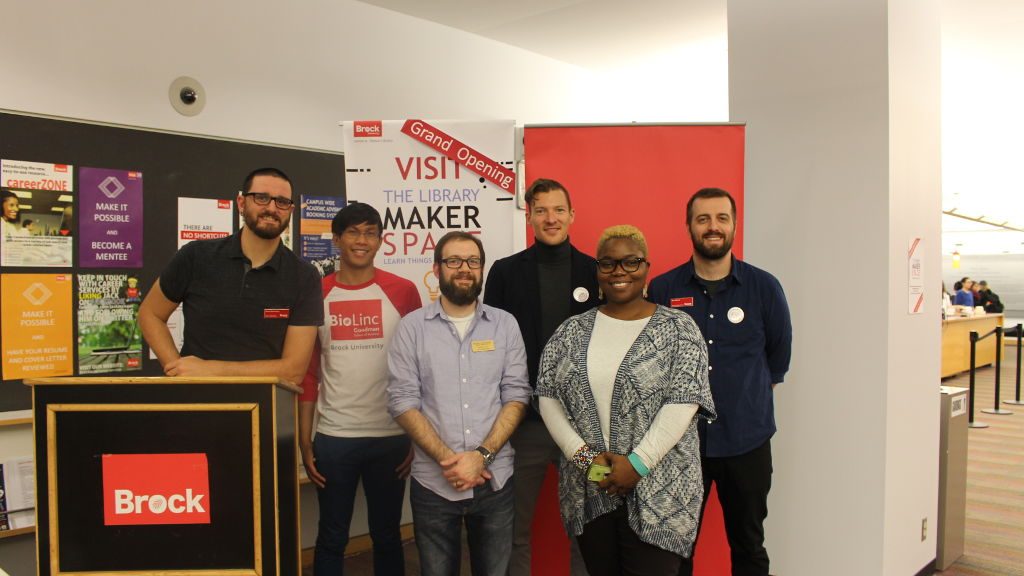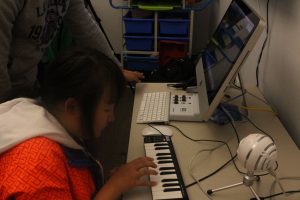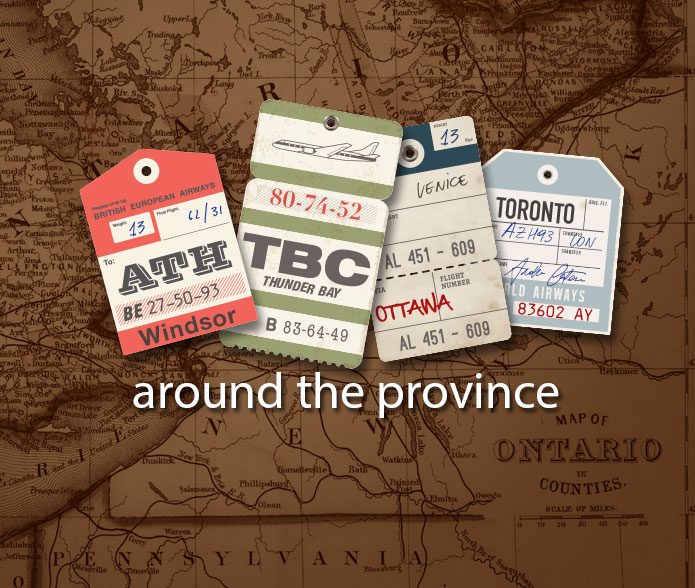Learn about the benefits of constructing a multi-year internship from a MLIS student's perspective.

Brock’s new Makerspace: connecting community and technology
In the April 2015 edition of Open Shelf, Jonathan Younker published In Praise of Maker Culture, describing the maker culture in the Brock Library’s Systems department, even though our library did not yet have its own makerspace. We are extremely happy to write that in July of this past year, Brock Library soft-launched the Library Makerspace, and we just had our grand opening in late October.

The Library Makerspace offers weekday workshops on such subjects as video editing, 3D modeling, Arduino platforms, audio production basics, and web development, which have been generally well attended and received. We also offer daily drop-in times for anyone to come in and use our resources or expertise. By far the biggest draw of the space has been 3D modeling and printing as well as our Oculus Rift virtual reality headset.
The evolution of the makerspace has highlighted the need for the Library to actively engage students in non-traditional ways of seeking information. The Library Makerspace has generally attracted students and staff that are curious about exploring and interacting with new technology, especially technology that they would not be able to access elsewhere. Many who have frequented the space have an interest in learning or creating things that are not directly related to their field of study.
Having space and equipment for a makerspace is useless without knowledgeable staff to support it, and for us, soft-launching in the summer term helped us get up-to-speed on the technology being set up in the space without the crush of incoming students. This has been a learning experience, for us and our users, and these are our key learning points discovered in the process of establishing a post-secondary library makerspace at Brock:
 Community: Be open to connecting with other faculties on campus who can lend their expertise and are willing to incorporate the space into their list of resources for students. Once everyone on campus is on the same page with the purpose and vision of the makerspace it will be easier to get people connecting, collaborating and using the tools in the space.
Community: Be open to connecting with other faculties on campus who can lend their expertise and are willing to incorporate the space into their list of resources for students. Once everyone on campus is on the same page with the purpose and vision of the makerspace it will be easier to get people connecting, collaborating and using the tools in the space.- Flexibility: It’s great to lay down the blueprint of how your space will run and look, especially in regards to operational guidelines that align with your university’s existing vision and mission. That said, it is important to stay flexible as you receive feedback from students, faculty and staff. Makerspaces in universities are relatively new, so keep researching and stay informed of progress and obstacles faced in other post-secondary institutions.
- Communication: With such a new space there will be questions from faculty, staff and students. We’ve found most questions concern the ‘how’ and ‘what’. Having a great web presence and consistent messaging in your social media is a great asset. Having a user-friendly website will allow people to get questions answered when someone if physically not there. Being well connected with your marketing and communications outlets on campus will also be useful to continue promoting and marketing your space. Our Grand Opening was great for that reason, as it was a great platform to provide answers and a hands-on experience to a large audience.
- High-Impact Tech: Even though our makerspace is in a heavily trafficked part of the University, one of the hardest parts is often simply getting people to cross the threshold and walk into the space. “High impact” technology, like 3D printers and Oculus Rifts, will get people into the room; workshops and knowledgeable staff will keep them coming back.
- 3D Printing Philosophy: Focus on a teaching and learning approach to 3D printing. Helping students get on the path by teaching 3D modeling skills and the concepts involved, instead of a pay-for-print model, took the pressure off us of getting our 3D prints perfect 100% of the time for paying customers on a deadline.
- Play: Have equipment that encourages constructive play. Makey Makeys, musical instruments, Lego, etc., will bring people into the space and get conversations started and connections established.
We are not the first makerspace in an academic library (and certainly will not be the last), so we had the luxury of looking at many well-established versions on which to model ours. We were able to visit many (online and in-person) to see what technology and services other institutions were using, and to get a sense of what students in a medium-sized academic institution like ours, one without architecture, fashion, or engineering programs (typically heavy users and supporters of makerspaces) would want in a library-run makerspace. Where we have had the most success is by simply being an open, inviting place for students, faculty, and staff alike to come in, collaborate, participate, and to help build a larger maker culture on campus.
Jonathan Younker is the Head, Library Systems and Technologies at Brock University. He can be reached on Twitter @jtyounker and on email at jyounker [at] brocku.ca.
Tabitha Lewis is currently the Library IT Support Technician in the James A Gibson Library. She can be reached at tlewis3[at]brocku.ca

